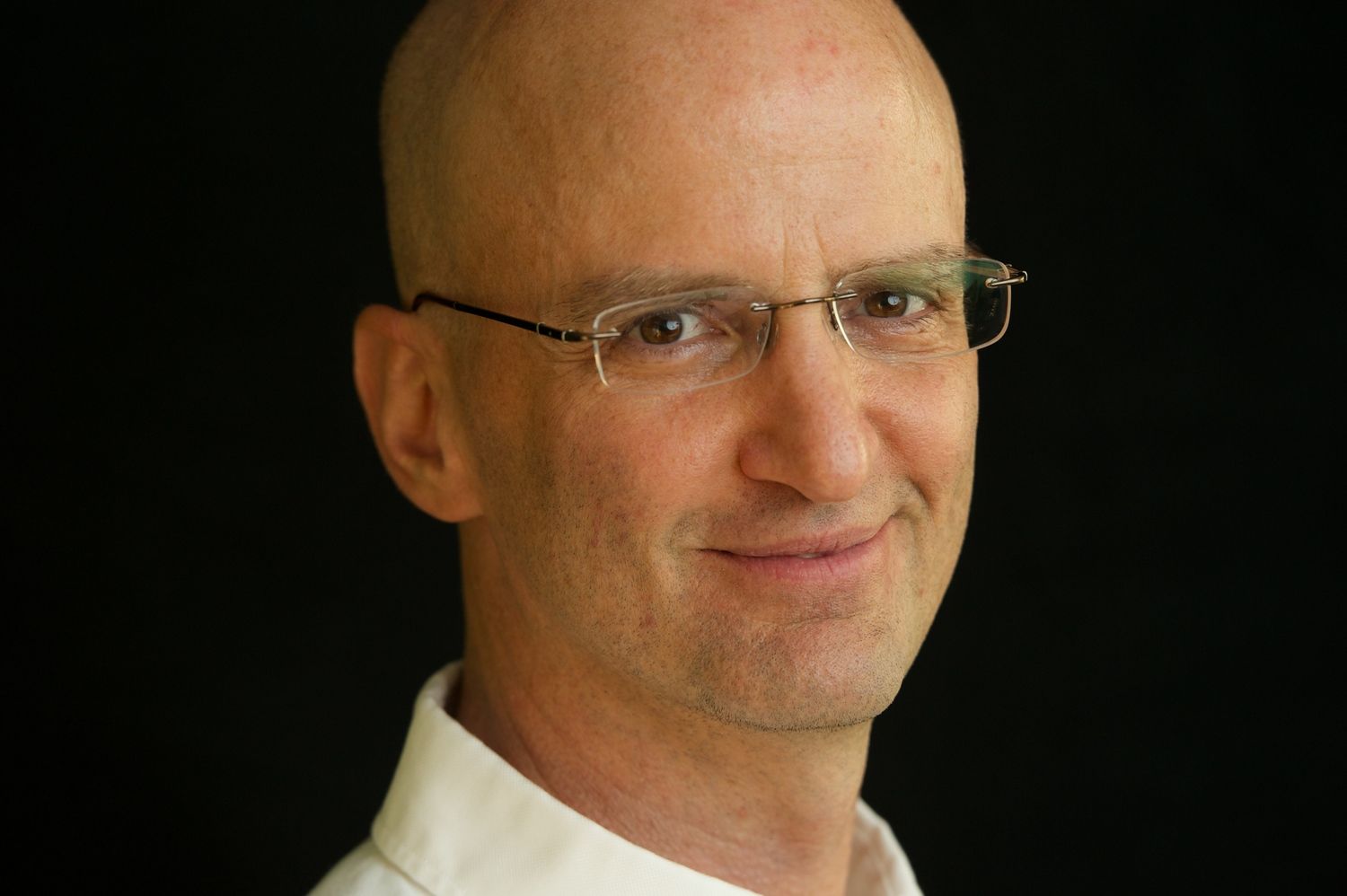Disappering Berlin 2021
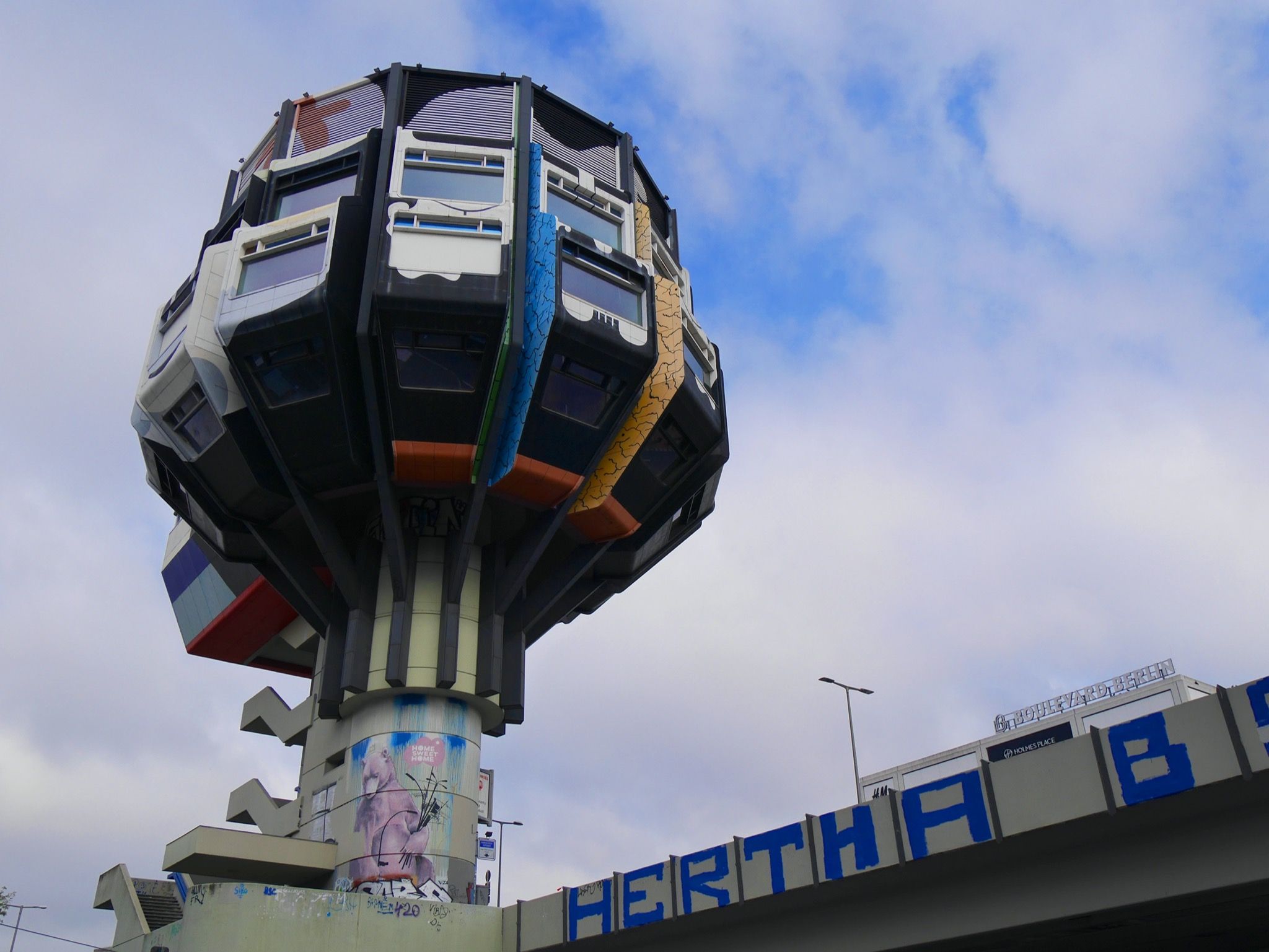
Launched in 2019, DISAPPEARING BERLIN – the Schinkel Pavillon's urbanist offsite program – was, like the rest of us, forced online in spring 2020. After a handful of outdoor animations this past summer, the project returns with a bang this weekend. On September 18 and 19, 2021, a Disappearing Berlin program co-organized by Marie-Therese Bruglacher and PAN Records’ Bill Kouligas takes over Berlin’s Bierpinsel, taking the baton from last week’s fashion-focused Reference Festival with artist talks, a Radio Acona broadcast hosted by Asad Rasa, live performances from Amnesia Scanner and YaYa Bones, and video installation from Cyprien Gaillard – among other activations.
It was announced in local media this week that the iconic Bierpinsel, unoccupied since 2006, has recently been sold to Immoma Group, a trend-minded development firm that intends to convert part of the former restaurant and club into commercial office space. Whether or not part of the futurist landmark will remain available to Berlin’s artists and creatives remains to be seen, but the weekend’s events are sure to be memorable. 032c spoke to Bruglacher about the bigger picture.
Was there a punctual moment that triggered the idea of DISAPPEARING BERLIN? What discussions were you having with local artists and communities that made the project feel urgent?
We’ve known Berlin to be rapidly changing for several years – and it seems Covid-19 has had an accelerating effect in displacing social and cultural spaces. Architecturally and historically significant buildings have been torn down everywhere around us, despite building protections. Incredible landmark buildings – including the ICC, the Mäusebunker, and the Bierpinsel – have been left vacant, awaiting investors to convert or demolish them.
Berlin has traditionally been an architectural palimpsest, as different ideologies have left their marks in the cityscape – particularly over the last century. We are currently witnessing a whole new chapter: the wild and often uncompromising Berlin is becoming an increasingly streamlined, homogenous, and sadly quite normative Western metropolis. What made Berlin so appealing over the years – its ruptures, its freedom, and its many open spaces – is at risk. When we started discussing this, it quickly became obvious that we wanted to do something to address what’s been going on – to make this abstract change more tangible.
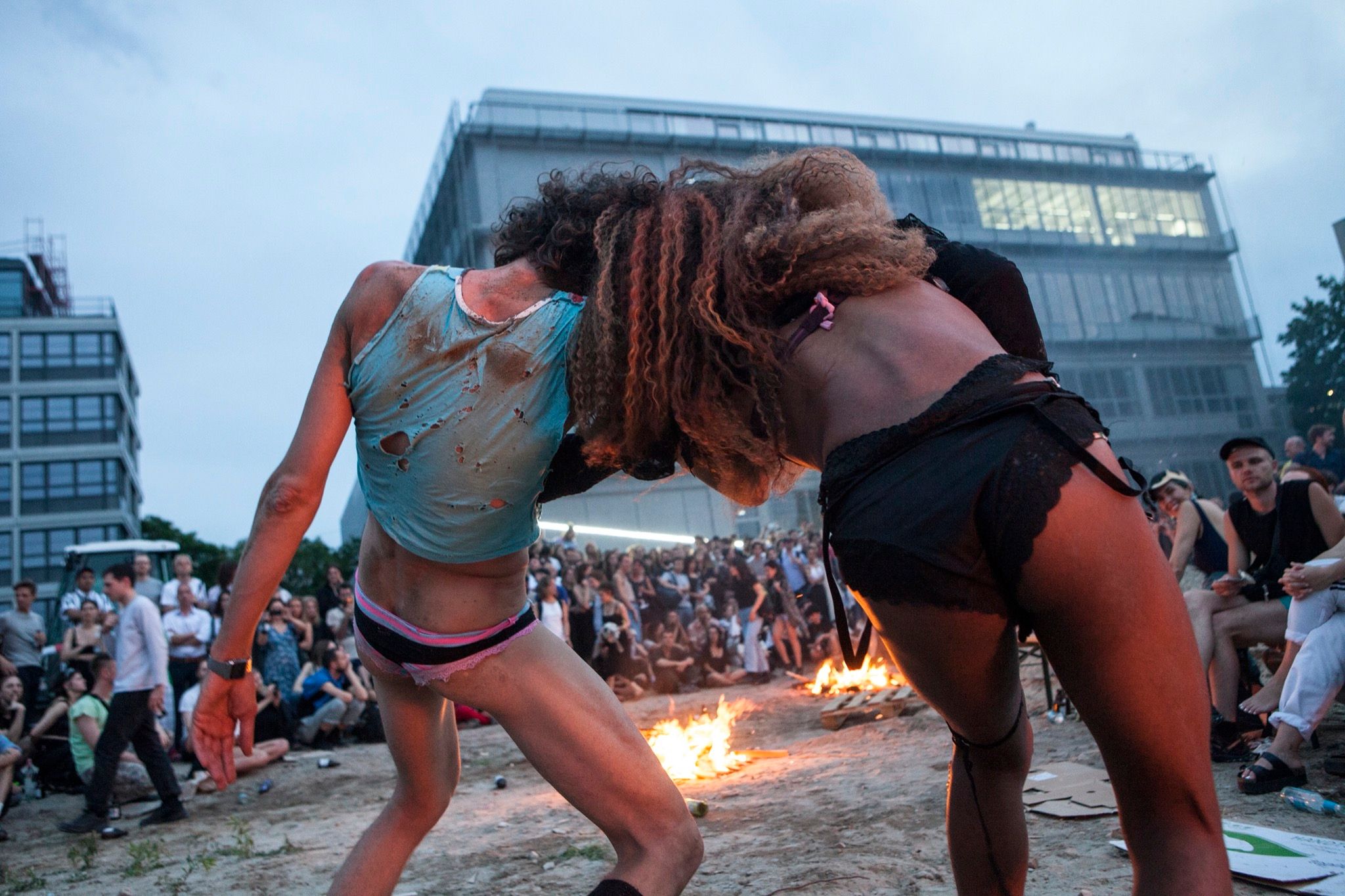
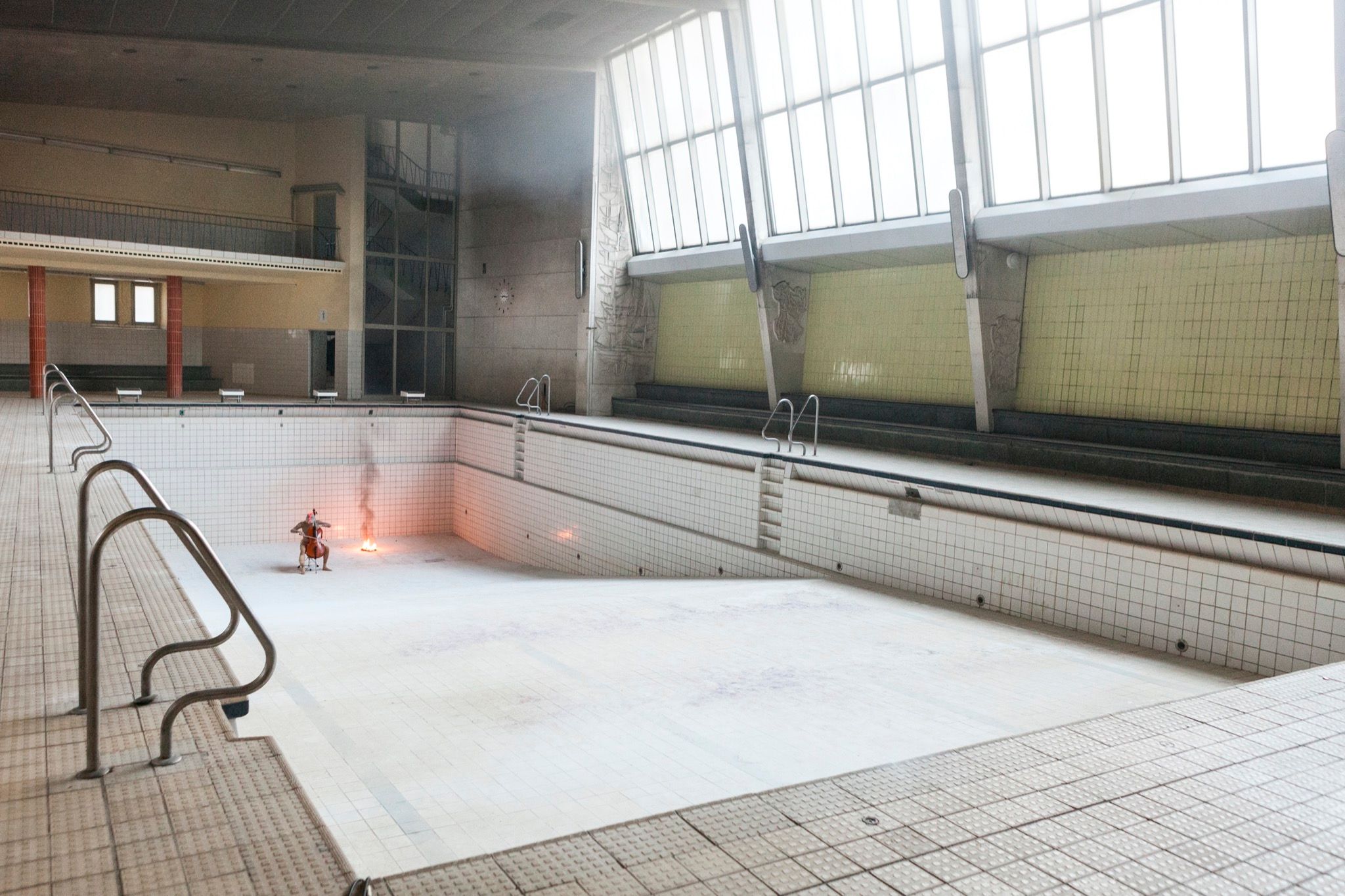
How did you go about achieving that tangibility?
A lot of times the change a city is going through is so imminent and omnipresent that it becomes invisible. DISAPPEARING BERLIN is concerned with the loss materialized in the physical demolition of iconic buildings and significant sites. For the 2019-2020 series, we invited artists, musicians, performers, curators, and writers to collaborate with us to create unique synergies between art and architecture. For one day or one night, ephemeral interventions took place in buildings and at locations that were about to close, already vacated, or scheduled for demolition or privatization. We are interested in the moment of change happening at or around these sites. We chose exceptional places that people should experience at least once, and thereby were able to allow these buildings and spaces to appear in a new and different light: as full of potential, despite being on the verge of disappearing.
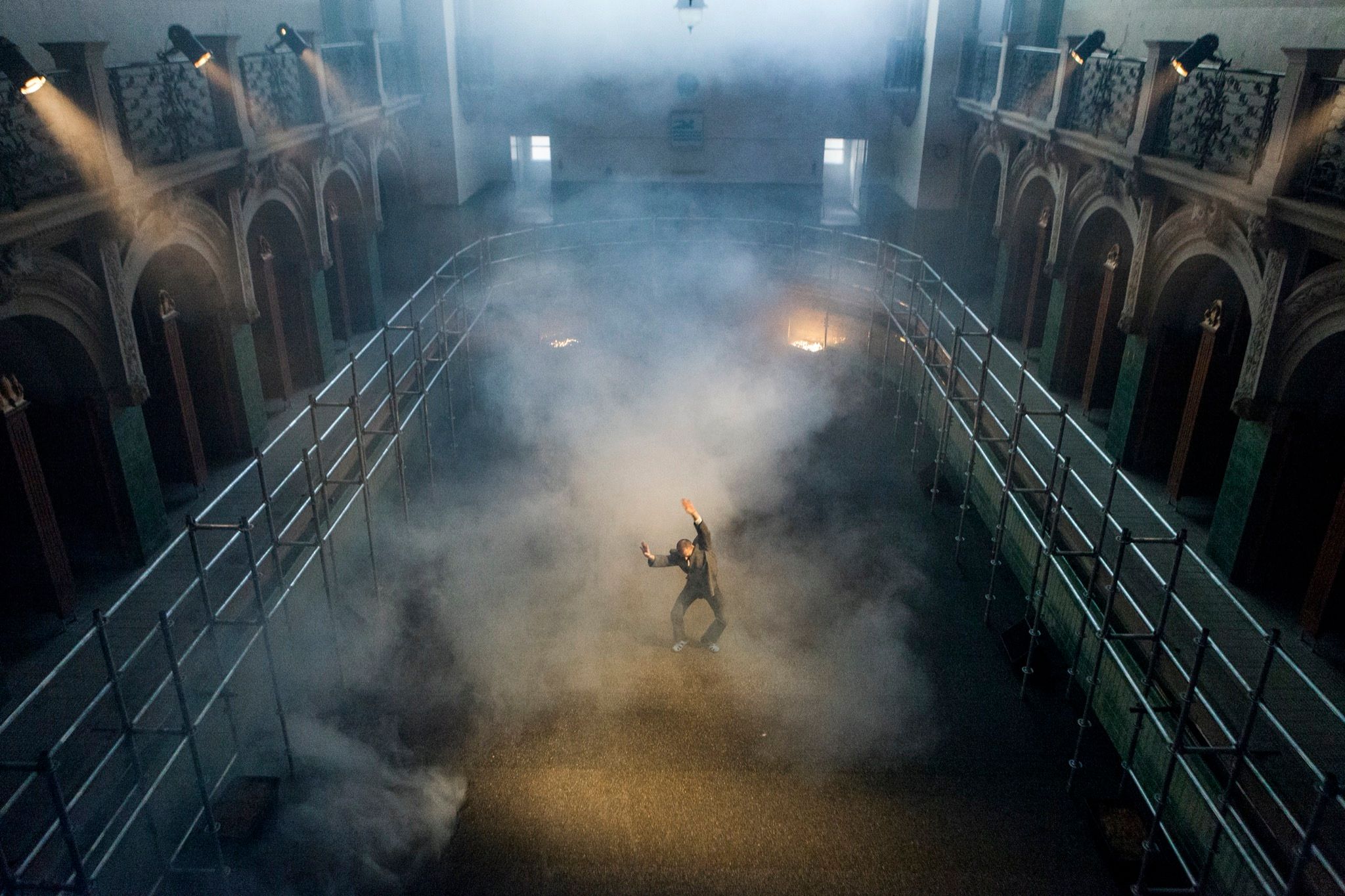
How did communities react to the initial series of interventions?
It felt like we hit a nerve with DISAPPEARING BERLIN. From the very beginning, we received a lot of feedback and an enthusiastic response – not only from our local community but from New York and London, where similar processes have been at work for decades, and from Amsterdam or Paris, where the transformation happened more recently. These initial conversations quickly grew into a network with an ongoing exchange of knowledge, proposals, and ideas that ended up shaping the program.
At times we managed to put our finger right where it hurts. When we invited Josh Johnson and Patrick Belaga to do a dance and music performance at the historic Baerwaldbad, a public pool Kreuzberg that closed 2017, we unwittingly ended up in the center of a contentious lawsuit – a paralyzed political process involving the local administration, the authorities, and a non-profit. When we announced our event, local politicians took to Twitter to share their views on the situation and vent their anger. The police eventually barricaded the doors the day of the event to prevent us from entering, but we had already smuggled in the performers early that morning. We ended up live streaming the performance from inside the deserted Art Nouveau pool as the audience watched on the sidewalk.
“The struggle over Berlin’s identity – its architectures, public spaces, and its communities – is real, and if we want to have any part in Berlin’s future, it’s something we should consider fighting for now.”
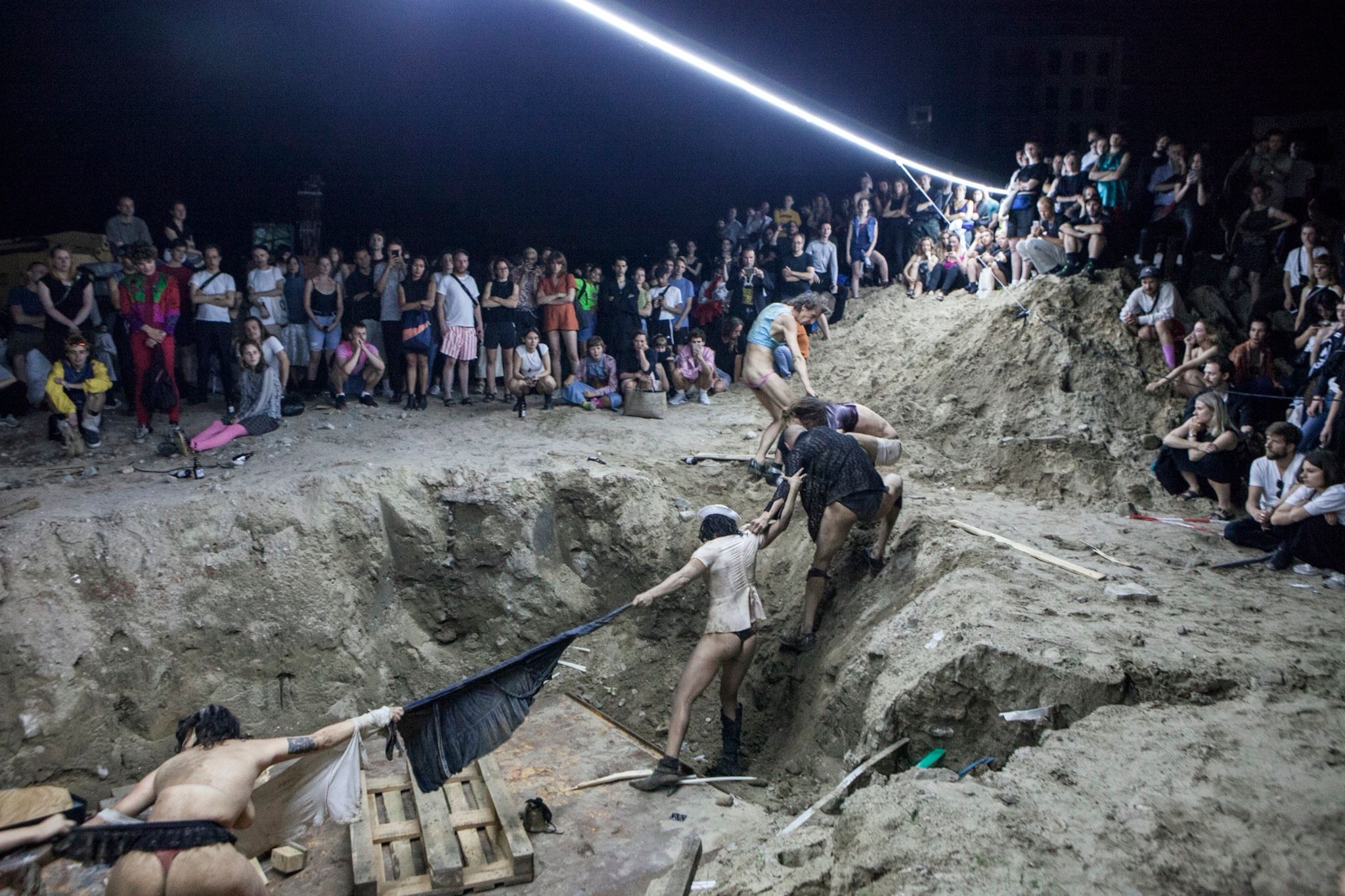
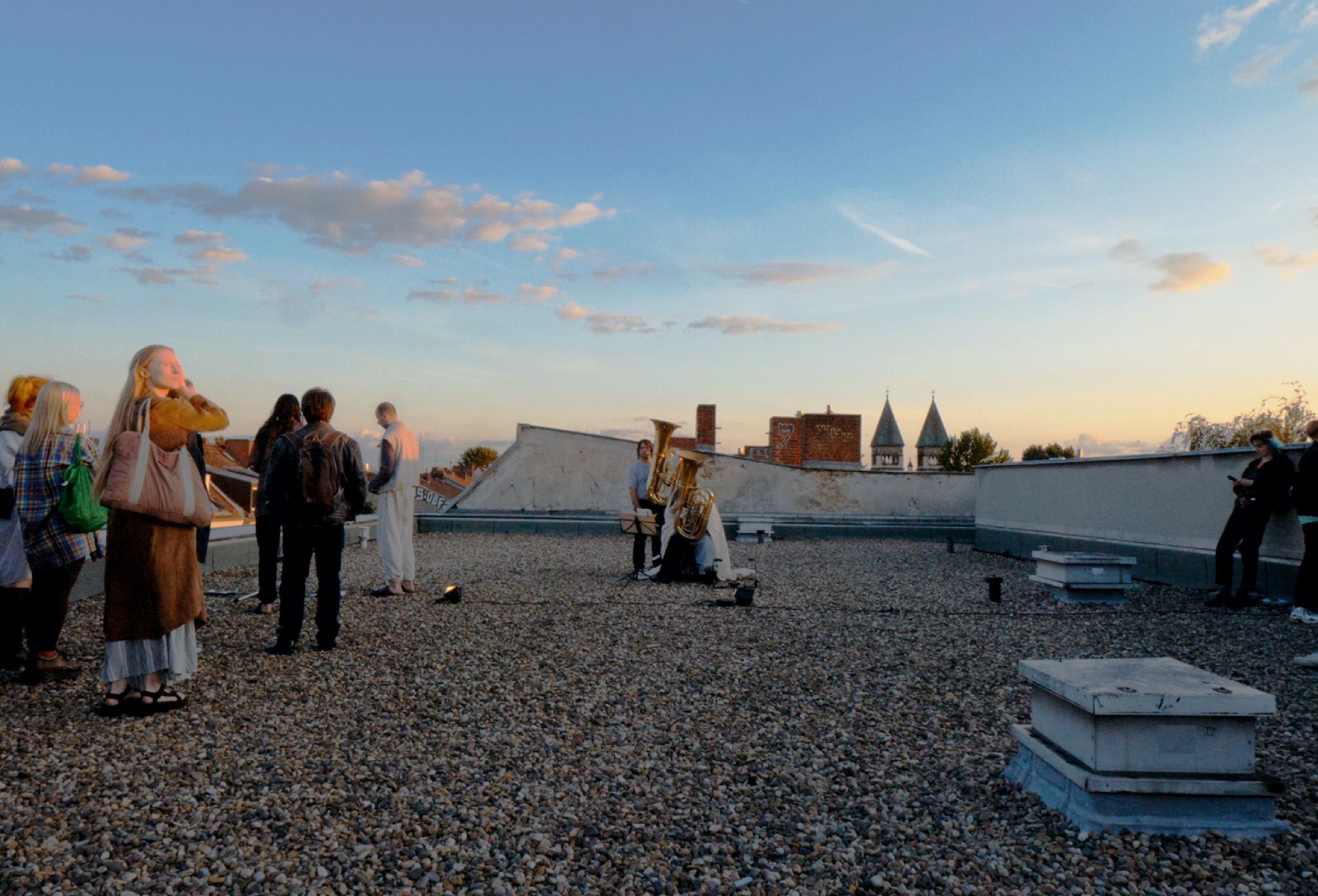
The highly globalized art community can be a bit cut off from local political life. How can we redress that?
DISAPPEARING BERLIN’s very first event took place in the former cafeteria on the 22nd floor of the Postbank Tower in Kreuzberg – a site of local political power plays for years, in a back and forth between developers and non-profits that wanted to claim the building for more experimental housing projects rather than offices. Guess who lost. That night 16 women guitar players interpreted Julius Eastman’s “Gay Guerrilla,” as we watched the sun set over Berlin on one side, while the full moon slowly rose on the other. It was a spectacular panorama, as the whole of Berlin sprawled before us, caught in a moment of stillness amid reinvention and change. We can’t stop what’s happening – and I’m not sure we’d even want to – but we can recognize that we are part of this change.
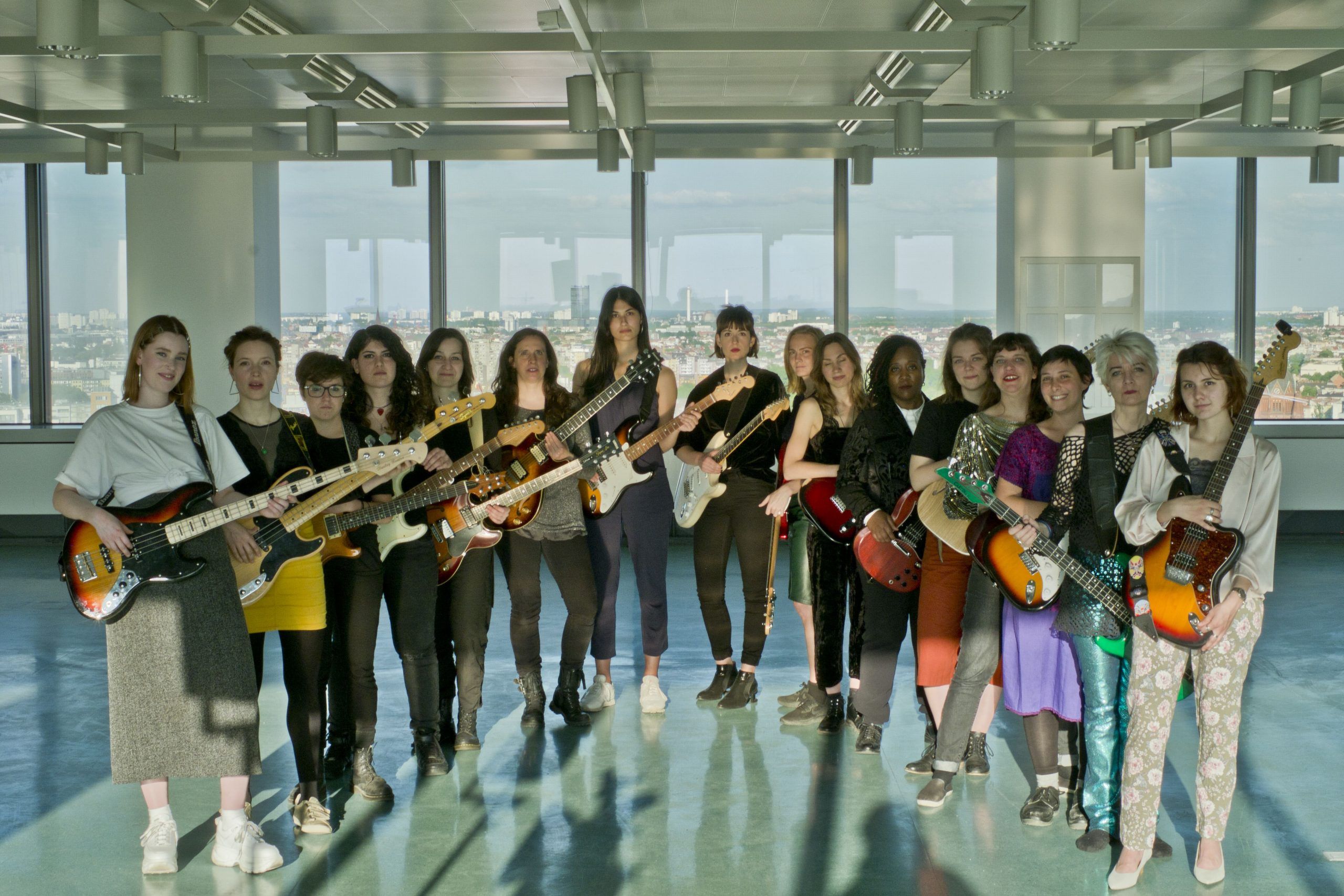
How do you envision the future footprint of DISAPPEARING BERLIN?
We see DISAPPEARING BERLIN as a mindset, a way of looking at the city. As an artist-run space, Schinkel Pavillon itself emerged from its community in the historic center of Berlin, where change has left extensive marks. The Palast der Republik of the former GDR is gone, the neoclassical Berlin Palace has been reconstructed to house the controversial Humboldt Forum, and Schinkel’s Bauakademie will soon be reappearing too. There may, of course, come a day when the Pavillon becomes impossible to sustain in the face of luxury real estate development, which has been proliferating in Mitte for years now. So in a sense, DISAPPEARING BERLIN is also a way to experiment with what an institution can be – a dispersed entity, perhaps, that can emerge from and disappear into the fabric of a city.
You can’t really grasp DISAPPEARING BERLIN by singling out individual projects. The diversity of artists, musicians, performers, architectures, places and spaces, buildings, and openings brings this project to life. Each unique event captures part of the spirit of Berlin and why we all chose to live here. And, in their ephemerality, the events remind us how precious and precarious the city is as an organism and a social fabric. DISAPPEARING BERLIN also crystallizes in the projects that didn’t happen. One thing we have definitely learned is how quickly things move, as many of the spaces, places, and buildings we considered when we first started working on the project already don’t exist anymore. They are irrevocably gone. The struggle over Berlin’s identity – its architectures, public spaces, and its communities – is real, and if we want to have any part in Berlin’s future, it’s something we should consider fighting for now.
Click here for the full Disappearing Berlin program.
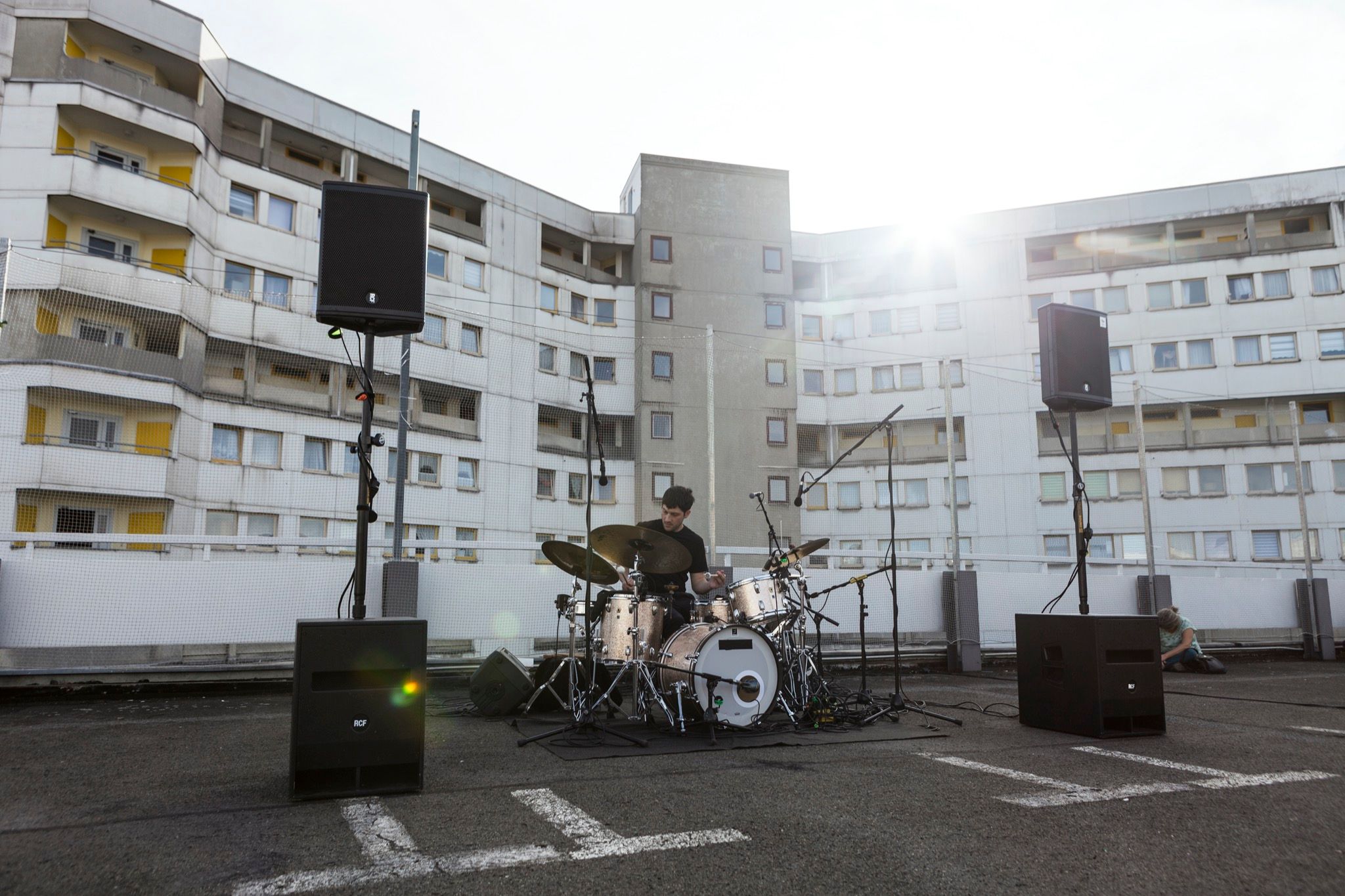
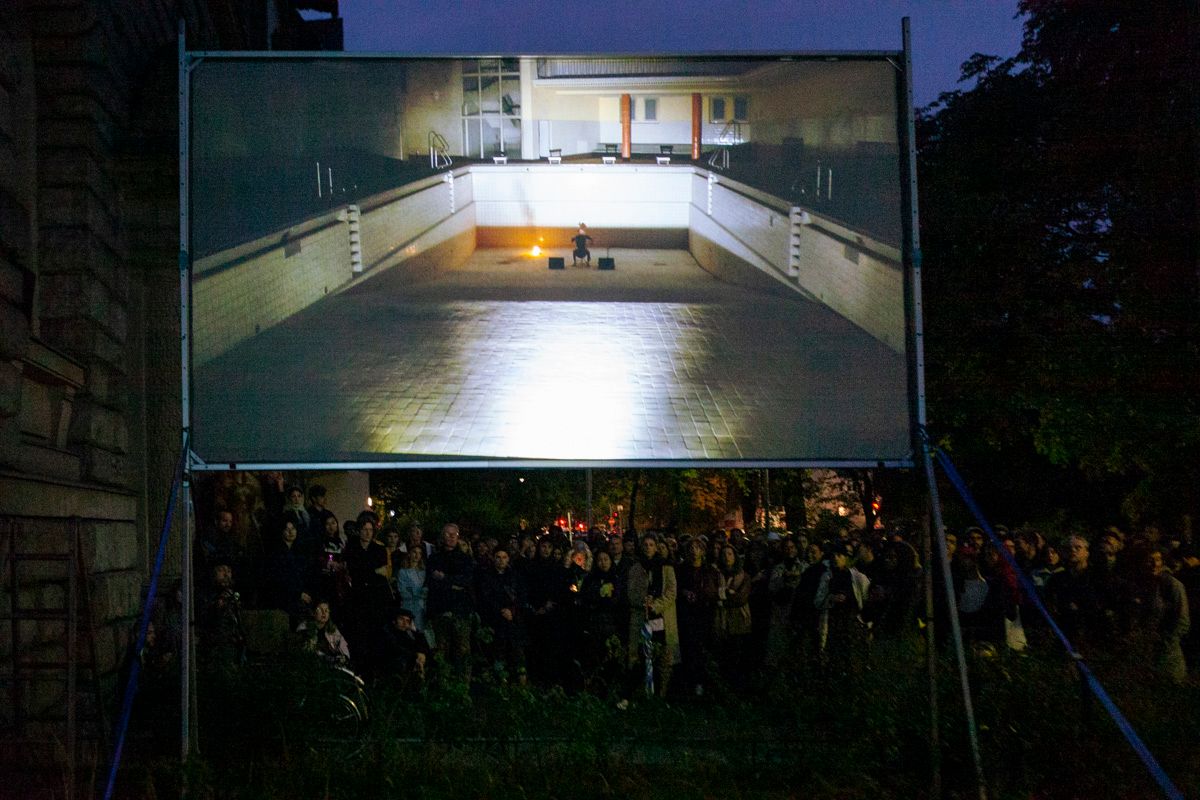
Credits
- :
